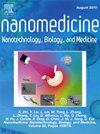聚苯乙烯微塑料和纳米塑料对不含和含M细胞的人肠道类器官上皮组织模型的生物学效应。
IF 4.2
2区 医学
Q2 MEDICINE, RESEARCH & EXPERIMENTAL
引用次数: 2
摘要
环境中塑料释放的微塑料和纳米塑料(MPs和NPs)可以进入食物链并以人体肠道为目标。然而,由于缺乏相关的人体肠道模型来验证从动物研究或使用癌细胞的组织模型中获得的数据,因此关于这些颗粒对人体肠道的影响的知识仍然有限。在这项研究中,我们利用人类肠道类器官来培养上皮细胞,以模拟天然组织的细胞复杂性和功能。诱导微折叠细胞(M细胞)在暴露于MPs和NPs时区分其作用。在暴露过程中,M细胞充当传感器、捕获者和大颗粒的转运者。上皮细胞以大小、浓度和时间依赖的方式内化颗粒。重要的是,高浓度颗粒显著触发了与人类炎症性肠病(IBD)相关的炎性细胞因子的分泌。本文章由计算机程序翻译,如有差异,请以英文原文为准。
Biological effects of polystyrene micro- and nano-plastics on human intestinal organoid-derived epithelial tissue models without and with M cells.
Micro- and nano-plastics (MPs and NPs) released from plastics in the environment can enter the food chain and target the human intestine. However, knowledge about the effects of these particles on the human intestine is still limited due to the lack of relevant human intestinal models to validate data obtained from animal studies or tissue models employing cancer cells. In this study, human intestinal organoids were used to develop epithelia to mimic the cell complexity and functions of native tissue. Microfold cells (M cells) were induced to distinguish their role when exposure to MPs and NPs. During the exposure, the M cells acted as sensors, capturers and transporters of larger sized particles. The epithelial cells internalized the particles in a size-, concentration-, and time-dependent manner. Importantly, high concentrations of particles significantly triggered the secretion of a panel of inflammatory cytokines linked to human inflammatory bowel disease (IBD).
求助全文
通过发布文献求助,成功后即可免费获取论文全文。
去求助
来源期刊
CiteScore
11.10
自引率
0.00%
发文量
133
审稿时长
42 days
期刊介绍:
The mission of Nanomedicine: Nanotechnology, Biology, and Medicine (Nanomedicine: NBM) is to promote the emerging interdisciplinary field of nanomedicine.
Nanomedicine: NBM is an international, peer-reviewed journal presenting novel, significant, and interdisciplinary theoretical and experimental results related to nanoscience and nanotechnology in the life and health sciences. Content includes basic, translational, and clinical research addressing diagnosis, treatment, monitoring, prediction, and prevention of diseases.

 求助内容:
求助内容: 应助结果提醒方式:
应助结果提醒方式:


